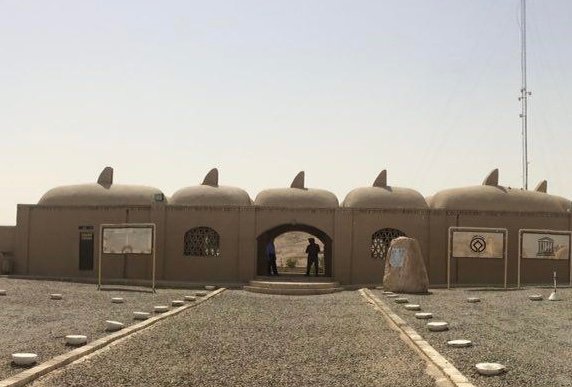Shahr-e Sukhteh: A Bronze Age Urban Settlement in Iran
Shahr-e Sukhteh, also known as Burnt City, is an ancient urban settlement located in southeastern Iran. It is considered one of the world’s most important archaeological sites, providing valuable insights into the Bronze Age civilizations that existed over 5,000 years ago. This article aims to explore the discovery, significance, geographical location, architecture, artifacts, trade, societal structure, technological advancements, and unanswered questions surrounding Shahr-e Sukhteh. Additionally, we will discuss preservation efforts and the growing tourism industry at this remarkable site.

Discovery and Excavation of Shahr-e Sukhteh
Shahr-e Sukhteh was accidentally discovered in 1967 during a construction project. Excavations began in the early 1970s and continued for several decades, uncovering an astonishing wealth of artifacts and remains. The site covers an area of approximately 150 hectares, making it one of the largest Bronze Age urban settlements ever discovered. The extensive excavation work has provided researchers with invaluable information about the inhabitants’ lives, culture, and technological advancements.
Significance of Shahr-e Sukhteh in Bronze Age History
Shahr-e Sukhteh holds immense significance in understanding the Bronze Age civilizations that thrived in the region. The discoveries made at this site have shed light on the complexity of urbanization, trade networks, and social structures during that era. The advanced architecture, well-preserved artifacts, and evidence of long-distance trade routes demonstrate the sophistication and connectivity of the society that once inhabited Shahr-e Sukhteh.
Geographical Location and Layout of Shahr-e Sukhteh
Shahr-e Sukhteh is situated on the eastern bank of the Helmand River, near the border between Iran and Afghanistan. Its strategic location made it a hub for trade and cultural exchange between different regions. The settlement was meticulously planned, with a central citadel surrounded by residential areas, industrial zones, and a cemetery. The city’s layout indicates a hierarchical social structure, where the elite resided within the citadel while commoners lived in the surrounding areas.
Architecture and Infrastructure of Shahr-e Sukhteh
The architecture of Shahr-e Sukhteh showcases the remarkable skills and knowledge of its inhabitants. The city had a complex water management system, with underground canals and wells to ensure a steady water supply. The houses were constructed using mud bricks and featured multiple rooms, courtyards, and storage areas. The citadel contained large buildings, possibly serving administrative or religious purposes, indicating a centralized authority.
Artifacts and Material Culture of Shahr-e Sukhteh
The excavation of Shahr-e Sukhteh has unearthed a vast array of artifacts, providing insight into the daily lives and material culture of its inhabitants. The discovery of pottery, jewelry, tools, weapons, and even a gaming board showcases the skills and artistic abilities of the people who lived here. Intricate pottery designs, bronze figurines, and jewelry made from precious materials highlight the sophistication of craftsmanship during the Bronze Age.
Trade and Economic Activities in Shahr-e Sukhteh
Shahr-e Sukhteh was a thriving center of trade and economic activities. Archaeologists have found evidence of long-distance trade, including precious gemstones from as far as India, tin from Afghanistan, and lapis lazuli from Turkmenistan. The city’s strategic location along major trade routes allowed it to flourish economically, contributing to the prosperity and cultural exchange within the region.
Societal Structure and Everyday Life in Shahr-e Sukhteh
The social structure of Shahr-e Sukhteh was likely hierarchical, with a clear distinction between the ruling elite and the commoners. The discovery of a cemetery containing elaborate burials, such as those with precious grave goods and unique burial rituals, suggests a societal stratification. Everyday life in Shahr-e Sukhteh involved activities such as agriculture, metalworking, pottery production, and trade, as evidenced by the artifacts and infrastructure found at the site.
Technological Advancements in Shahr-e Sukhteh
Shahr-e Sukhteh demonstrates several technological advancements for its time. The city had a highly developed pottery industry, utilizing various techniques such as wheel-throwing and decorative painting. Sophisticated metalworking was also evident, with the discovery of copper smelting furnaces and bronze artifacts. The advanced water management system and the use of underground canals for irrigation further showcase the engineering marvels of the Bronze Age inhabitants.
Mysteries and Unanswered Questions about Shahr-e Sukhteh
Despite extensive excavations, there are still mysteries and unanswered questions surrounding Shahr-e Sukhteh. The reasons behind the city’s sudden abandonment around 1800 BCE remain unclear. The purpose of certain structures within the citadel, such as the so-called “assembly hall,” is still debated among archaeologists. These mysteries continue to intrigue scholars and fuel ongoing research at the site.
Preservation Efforts and Tourism at Shahr-e Sukhteh
Recognizing the significance of Shahr-e Sukhteh, preservation efforts have been made to protect and conserve the site. The construction of protective structures and ongoing excavations ensure the preservation of this invaluable archaeological treasure. In recent years, the site has also attracted a growing number of tourists interested in exploring the history and culture of the Bronze Age. Tourism infrastructure, including visitor centers and guided tours, has been developed to accommodate the increasing interest in Shahr-e Sukhteh.
Shahr-e Sukhteh’s Contribution to Understanding Ancient Civilizations
Shahr-e Sukhteh, the Bronze Age urban settlement in Iran, has greatly contributed to our understanding of ancient civilizations. Through its discoveries, we have gained insights into various aspects of life during the Bronze Age, including societal structures, trade networks, technological advancements, and material culture. As ongoing research continues to unravel the mysteries surrounding Shahr-e Sukhteh, it remains a significant site that offers a captivating glimpse into the past and the rich history of human civilization.

